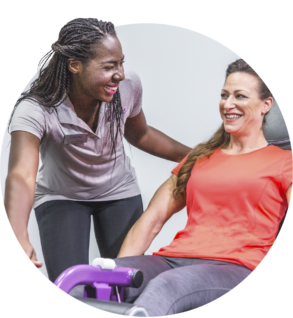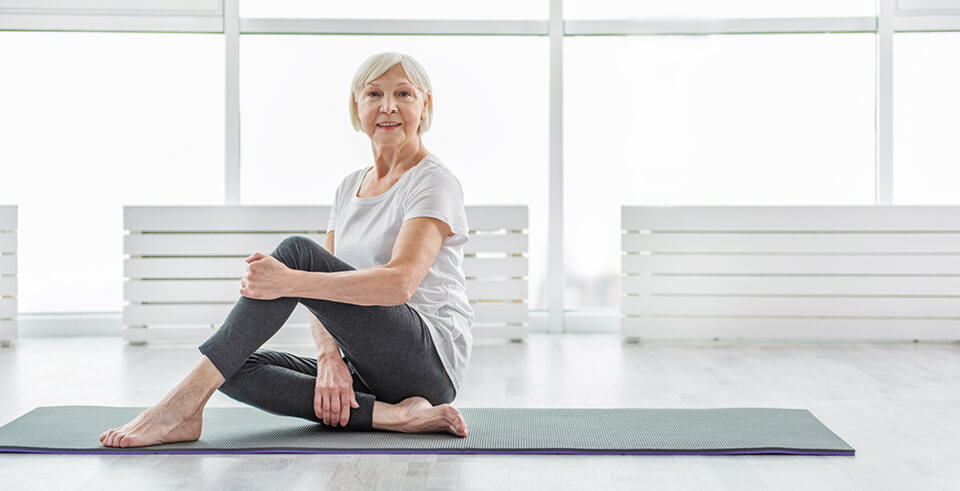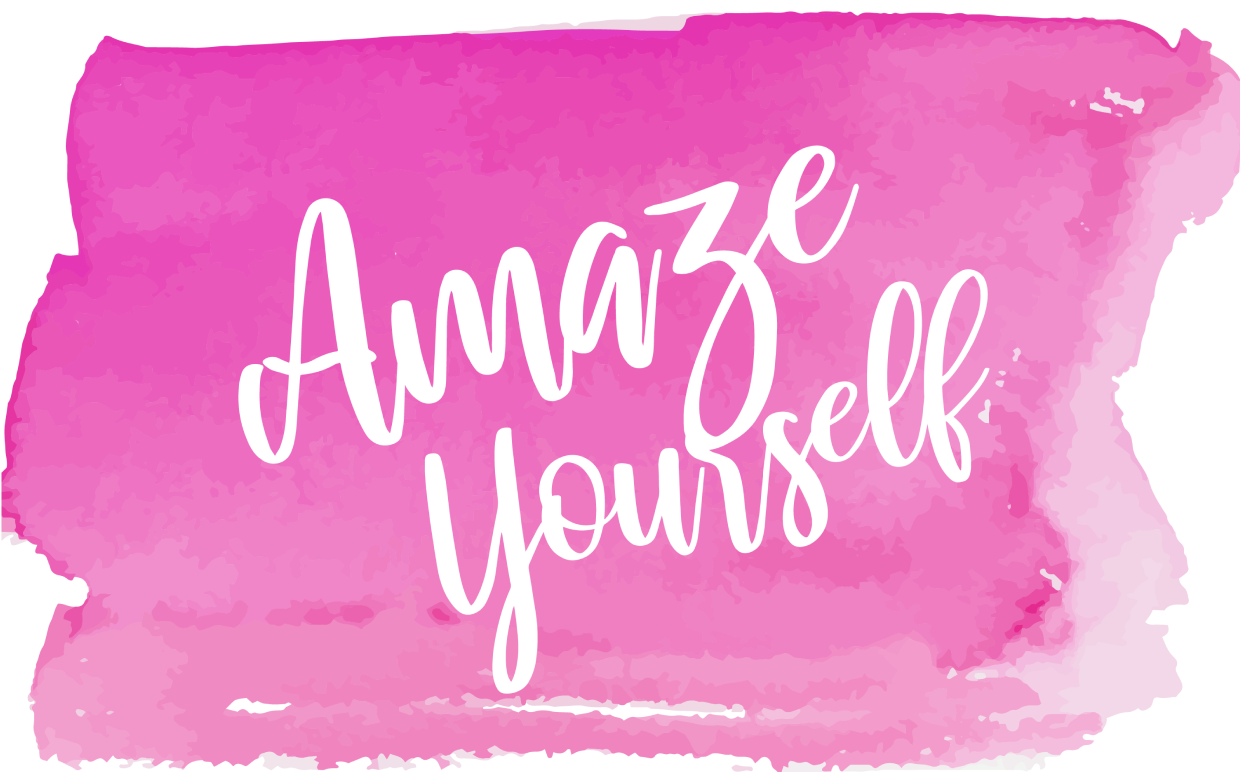How to Keep Muscles Toned As You Age
Healthy muscles don’t just make you look lean and toned; they are the powerhouses that fuel your metabolism.
Metabolically active muscle—the kind that’s devoid of harmful fat and teeming with energizing mitochondria—has a profound influence1 on everything from your weight to your energy levels to your risks of diabetes and heart disease.
However, just like your skin and hair on the outside of your body start to lose their luster as you age, so do your muscles on the inside. Starting in your 30s, the mitochondria in your muscles start to decline in number, and those that remain begin to slack off. Fat starts to invade the muscle that used to be 100 percent lean, giving it more of a marbled look. Slowly but surely, your vitality goes down and the number on the scale goes up. This makes weight loss over 40 all that much more difficult.
Sounds like bad news, and to be honest, some of this muscle aging is inevitable. By virtue of being human, your muscles are getting older1 along with the rest of your body. BUT the good news is there are things you can do—namely engaging in an effective full body workout like the Curves Circuit and following a healthy diet plan—to help turn a bit of this muscle destruction around.
Here are some things you can do:
1. Challenge your muscles
When you engage in a strength training workout plan like the Curves Circuit, you activate your muscles and encourage them to grow. And you’ll be encouraged to hear that it’s never too late to start. A study published in the journal Medicine and Science in Sport and Exercise2 found that men and women who started weight training in their 60s and 70s saw results in terms of muscle strength and size similar to people 20 to 30 years younger.
2. Get your zzzs
Sleep is important at any age, but as you get older, it’s even more critical to get the right amount. After a full body workout, your muscles need time to revive, and the best rest and regeneration takes place while you snooze3. The National Sleep Foundation4 recommends adults age 26-64 get seven to nine hours of sleep per night, and adults age 65 and older get seven to eight hours.
3. Make protein a priority
In order to build and preserve muscle and have the necessary energy for a whole body workout, you need protein. Protein contains amino acids5, which your body uses to grow, repair body tissue (muscles included), break down food, and complete other important functions.
In one study6, researchers found people who doubled their protein intakes saw an increase in protein synthesis, the process by which cells use protein to build muscle. When it comes to amino acids7, animal sources provide all you need. Other protein-rich foods, such as vegetables, grains, nuts, and seeds, provide some amino acids, but not a complete set. So, as part of a weight loss eating plan, your best bet is to eat a variety of sources of protein, from poultry to fish to meat to nuts. Aim for the recommended daily allowance for protein8, which for women over age 31 is 5 one-ounce equivalents per day. Here are some foods high in protein:
- Wild salmon (also rich in healthful omega-3s)
- Peanut butter
- Turkey breast
- Lentils
- Edamame
4. Get some carbs, too
Carbohydrates have gotten a bad rap, but when you’re shaping and preserving muscle with a full body workout, you need carbs for energy, as well as to build muscle mass. According to the American Journal of Clinical Nutrition9, eating carbohydrates post-workout helps you release insulin, which puts your body into an anabolic, muscle building state.
For best results10, follow a full-body workout with a combination of carbohydrates and protein. A great blend of all three: chocolate milk. Research11 has shown chocolate milk to be a healthful post-exercise treat. In between workouts, aim for a total of six ounces of carbs12 (up to 96 grams for a 2,000 calorie per day diet), such as fruits, vegetables, legumes, and whole grains.
5. Bone up on vitamin D
Aging13 can predispose you to low vitamin D levels, which is known to increase your risk for osteoporosis, fractures, and decreased muscle strength. The daily requirement for vitamin D14 for older adults is between 800 and 1000 IU per day. Talk to your doctor about getting your vitamin D levels checked—it’s a simple blood test. If it’s low, vitamin D supplements may be a good option. Also aim to get vitamin D15 from foods such as fortified milk, orange juice, cereals, salmon, mackerel, beef liver, and egg yolks.
6. Share strength training with friends
From wrinkles to joint aches to the surprises of menopause, no one understands what you’re going through like your female friends. We’re all in this together, and we want to give each other the support we deserve! And what better way to empower someone you care about and help her take care of her own future than to introduce her to the best workout of her life. This is a responsibility we should all take seriously: If we each bring just one new person to Curves, together we will help strengthen and tone tens of thousands of women. In turn, these women can then become healthy role models and inspire many more people around them as well. So, make it your mission to partner with Curves over the next 30 days to encourage someone you know and love to try the energizing whole body workout that is the Curves Circuit, so she can live a healthier, stronger life, too!
**The information contained above is presented in summary form only and intended to provide broad consumer understanding and knowledge of various healthcare topics. It should not be used in place of a visit, call, consultation or advice of your doctor or other healthcare provider. You should discuss any dietary changes or supplement usage with your doctor, and should not discontinue any prescription medications without first consulting your doctor.
The Curves women’s gym workout is convenient, combining strength training and cardio plus stretching – all in just 30 minutes – to strengthen your whole body. For more information about Curves and the full body workouts the Curves Circuit provides, visit ‘Why Curves’.
Sources:
- National Library of Medicine
- National Library of Medicine
- National Library of Medicine
- National Sleep Foundation
- Medline Plus
- National Library of Medicine
- Academy of Nutrition & Dietetics
- MyPlate
- Journal of Sports Science & Medicine
- Academy of Nutrition & Dietetics
- National Library of Medicine
- US Department of Health & Human Services
- National Library of Medicine
- Osteoporosis Foundation
- National Institute of Health







